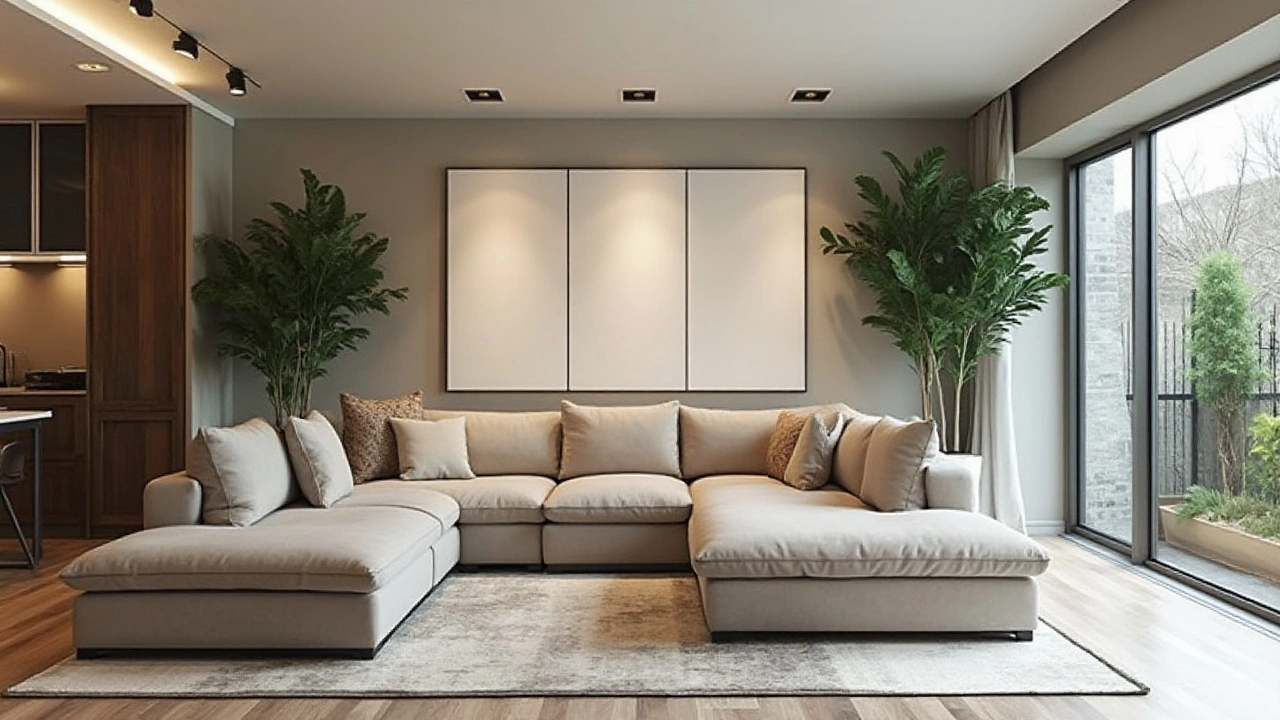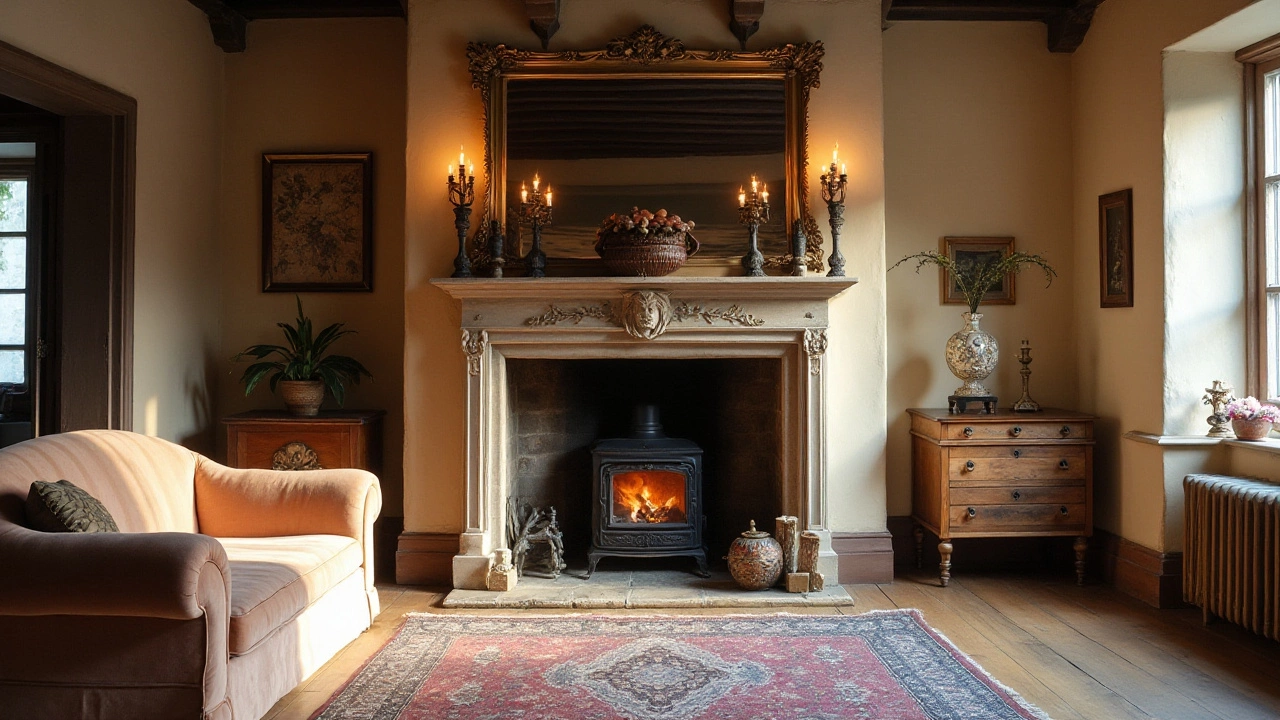When you step into a living room, the sofa often serves as the centerpiece, drawing the eye and inviting both conversation and relaxation. But placing a sofa isn't as straightforward as pushing it against a wall. It's about cleverly using space to set the tone for the room.
Whether you're aiming for a cozy family corner or an elegant sitting area, understanding the room's layout is crucial. This means paying attention to how people move through the space and how natural light interacts with the furnishings.
From choosing the right focal point to ensuring there's enough room for everyone to glide past gracefully, let's dive into exciting and innovative ways to arrange your sofa that will transform your living room into a haven of style and warmth.
- Understanding Room Dynamics
- Focal Point Identification
- Traffic Flow and Accessibility
- Balancing Aesthetics and Comfort
- Incorporating Personal Style
Understanding Room Dynamics
Before diving into the nitty-gritty of sofa placement, it's essential to grasp what makes a room tick. Each living room has its own unique energy, defined by the size, shape, and purpose of the space. Essentially, room dynamics are the ambient intricacies that influence how furniture interacts with us and the room itself. Recognizing these factors is the first step to mastering the art of furniture arrangement. The room’s dimensions play a pivotal role. For instance, a long and narrow space might call for a different arrangement compared to a compact, square living area.
Natural light is another critical element influencing room dynamics. The direction and intensity of light can affect everything, from the color of your walls to the mood the room projects. A well-lit room might allow for more creativity in placing your sofa, perhaps even floating it away from the walls, whereas a dimly lit space might require more strategic arrangements to open pathways for light. Consider how the sun patterns change throughout the day, and plan your layout accordingly.
A definitive aspect of understanding your room's dynamics lies in how you intend to use the space. Some living rooms are meant for media indulgence, with a TV calling for centered attention, while others might be for intimate gatherings with more emphasis on face-to-face interaction. Deciding this can help you position your furniture arrangement effectively. Don’t forget about the acoustics; soft furnishings, including your beloved sofa, absorb sound, which can be pertinent if the room is prone to echoes.
"A room should never allow the eye to settle in one place. It should smile at you and create fantasy." – Juan Montoya
Another factor to consider is the architectural features of the room. Fireplaces, built-in shelves, and windows are focal points in their own right. Ignoring these elements can lead to a disjointed feel within the space. Sometimes embracing asymmetry and aligning your sofa slightly off-kilter can make a room feel organically balanced.
Lastly, examine the flooring. While overlooked, the material and pattern of your floor can suggest how to plot furniture. Carpeted rooms might necessitate different arrangements compared to those with hardwood. Consider the texture and color; they too influence how space is perceived. Rugs can delineate areas within larger rooms, subtly suggesting where a sofa might best fit. Understanding these elements makes a significant difference and lays the groundwork for a cohesive home design that’s both functional and aesthetically pleasing.
Focal Point Identification
Identifying a focal point in your living room can transform how the space is perceived and utilized. A focal point is typically a feature that draws immediate attention upon entering the room. This could be a fireplace, a large window showcasing a beautiful view, or an entertainment unit centering around a television. The choice of focal point depends on the architectural specifics of your home and the lifestyle choices of your family. An engaging focal point naturally becomes the anchor for your design, guiding where you place your sofa and other significant furniture pieces.
When aligning your sofa with the focal point, the goal is to facilitate both comfort and conversation. Aligning seating to face or surround the focal point ensures that it remains the heart of the room's activity. If your living room lacks an obvious focal point, like a fireplace or large screen, consider creating one using artwork or a patterned rug. A well-chosen painting can whet the aesthetic appetite, enticing onlookers to admire its depth while keeping their focus centralized. Choosing the right combination will not just set a focal point but also personalize the room, reflecting your style and preference.
Design expert Emily Henderson once said,
"The focal point doesn't have to be architectural – it can be a great piece of art or even a large houseplant. Just make sure it's something you want to draw attention to."This quote reminds us that flexibility is key when it comes to designing our intimate spaces. Consider incorporating elements like bookshelves filled with intriguing reads or bold sculptures that resonate with your tastes and passions. With a creative touch, anything can serve as an effective focal point.
Finally, understanding your room's natural flow is crucial in supporting your choice of focal point. Take note of how people move through the room, assessing pathways that lend themselves to foot traffic while engaging the highlighted feature. Ensuring unobstructed access can mean the difference between a design that feels thoughtfully curated versus one that feels chaotic and disjointed. This is where the beauty of balance and harmony comes into play. By honing in on a central element and designing around it thoughtfully, you create a cohesive, inviting space that feels both intimate and expansive.

Traffic Flow and Accessibility
Creating a functional traffic flow in your living room is about more than just avoiding collisions between your family members and furniture; it's about fostering an inviting atmosphere where everyone can move freely and comfortably. A well-thought-out path not only enhances the usability of the room but also impacts how welcoming it feels to both family and guests. Before you position your sofa, take a moment to map out how you and others navigate the space daily. Consider which areas are most frequently traversed and how to keep pathways clear to make the living space accessible and enjoyable. The flow should guide people naturally to focal points like a television, fireplace, or a stunning piece of art.
Paths in the living room should ideally allow for at least 30 inches of space for easy passage, ensuring no one has to turn sideways or navigate around awkward angles. If your room is small, don't worry; effective design can often make a room appear larger by managing pathways well. This might involve angling your sofa or choosing compact, multi-functional furniture that doesn't disrupt movement. A smart layout considers all entries and exits in the living room to ensure that each doorway leads smoothly into the heart of the living area, enhancing both visual and practical flow.
"Movement patterns can define how inviting and comfortable a space feels," says interior designer Natalie Reid. "It's about creating connections between spaces that feel intuitive and balanced."
Achieving smooth traffic flow might mean rethinking traditional furniture arrangements. While placing a sofa against a wall might seem like it saves space, it can also interrupt easy access to other parts of the room. Instead, try floating your sofa to open up pathways behind it or arranging seating in a circular format to encourage interaction and movement from one seating spot to another. Do you often entertain guests? Then think about how people mingle and arrange your furniture to support sociability while keeping vital pathways open.
Remember, traffic flow isn't just a necessity but an asset in your home's design. Consider the natural light sources in your room and how shadows and reflections play throughout the day. Windows or open spaces should remain unobstructed by large furniture pieces, such as your sofa, to allow the room to shine in its natural light. This approach not only improves the room's aesthetic but also ensures that all areas feel inviting, fulfilling their potential for relaxation and hosting. When arranged thoughtfully, a living room doesn't just function – it beckons with grace and plenty of charm.
Balancing Aesthetics and Comfort
Crafting the perfect living room involves a thoughtful blend of both visual appeal and physical comfort. When it comes to placing a sofa, these two elements can at times seem at odds. A beautifully arranged living space might not be the most inviting if the seating isn't cozy, just as a plush, comfortable setup might clutter the room if not done right. It's all about striking that fine balance that makes the room both a pleasure to look at and live in. One practical way to achieve this is by selecting a sofa style that complements the room's ambiance while delivering soft cushions and well-proportioned dimensions. And then, it's about arranging it in a way that neither overwhelms nor undercompensates within the surrounding decor.
One aspect to consider when balancing these aspects is color. Choosing a sofa color that coordinates with the room's palette ties the space together, yet contrasting textures or materials can add interest without sacrificing harmony. Think about a neutral-colored sofa draped with vibrant throws or patterned accent pillows that invite people to settle in and stay a while. Lighting also plays a crucial role in accentuating the sofa's presence. Positioning your sofa where natural light highlights its features can enhance its look while maintaining a welcoming atmosphere.
Functionality should never play second fiddle to looks. Ensure that the furniture arrangement allows guests and family members to converse without obstruction by maintaining an easy, unobstructed path of movement around the sofa. Consider the seasonality in usage—are you opening the windows to a cool breeze or cozying up by the fireplace? Each scenario might tempt you to rearrange furniture arrangement to tailor both aesthetic appeal and comfort. Adapting to these shifts without disrupting the room's flow is key, with multi-functional or easily movable pieces serving as your allies.
"The home should be the treasure chest of living." – Le Corbusier
Consider your family's unique lifestyle needs as well. Are there children who love to tumble and play, echoing the impromptu aura that suggests comfort and makes a family room more personal? If so, choose sofas made of durable, easy-to-clean fabrics without sharp edges. This ensures safety without skimping on style. Lastly, remember technology's progression too. Built-in chargers or pull-out casual seating contribute greatly to the cozy factor without clashing with the room's overall theme. Envision a space that invites a deepened breath of relief upon entry, where you can appreciate the balance of form, function, and family comfort, reflecting a lifestyle filled with cherished moments.

Incorporating Personal Style
Personalizing your living room goes beyond paint colors and throw pillows. It's about embedding your soul into the space, making it reflect who you are. One of the most impactful ways to do this is through the thoughtful placement of your sofa. This central piece of furniture can anchor your design, setting the tone for the entire room. Whether you lean towards a minimalist aesthetic with clean lines and neutral colors, or a more eclectic vibe with vibrant patterns and hues, your sofa's placement can enhance and clarify your style vision.
For those with an affinity for natural textures and organic elements, placing your sofa near a large window and allowing nature's light to highlight your furniture can be transformative. Adding plants around the sofa area can create a seamless transition from indoor to outdoor, cultivating a sense of tranquility. If your style is more urban, with a love for modern art or industrial finishes, consider situating your sofa against a statement wall or bold artwork. This can create a dynamic visual anchor and provide the perfect backdrop for gatherings.
By positioning your sofa creatively, you also invite the opportunity for functional and decorative accessories to flourish. Think of using side tables or a coffee table to frame your sofa, each offering practical storage solutions while echoing the room's theme. A rug beneath the sofa not only defines the space but can also mirror patterns found elsewhere in the room, tying the entire look together. When aligning with your personal tastes, you might prefer vintage touches—a soft throw blanket reminiscent of a bygone era, or a collection of mismatched cushions that tell a story.
According to renowned interior designer Nate Berkus, "Your home should tell the story of who you are, and be a collection of what you love."
"Interior design is a dialogue between who you are and who you aim to become, and furniture placement plays a significant role in that conversation."By incorporating personal mementos or artwork that resonates with you, you not only design a space that looks good but feels right. This emotional connection can make your living room more than just another room; it becomes a sanctuary.
Let's not overlook practical considerations when integrating personal style. For families, like mine with Clementine and Silas, the sofa's placement should also be durable and functional. Perhaps you'd want a spot with good views for supervision or a configuration that allows for easy adaptation—like modular furniture options that can evolve with family needs. The right arrangement can maintain a balance between aesthetics and utility, ensuring that the living room remains both beautiful and livable for years to come.
 EN
EN
 HR
HR
 AR
AR

